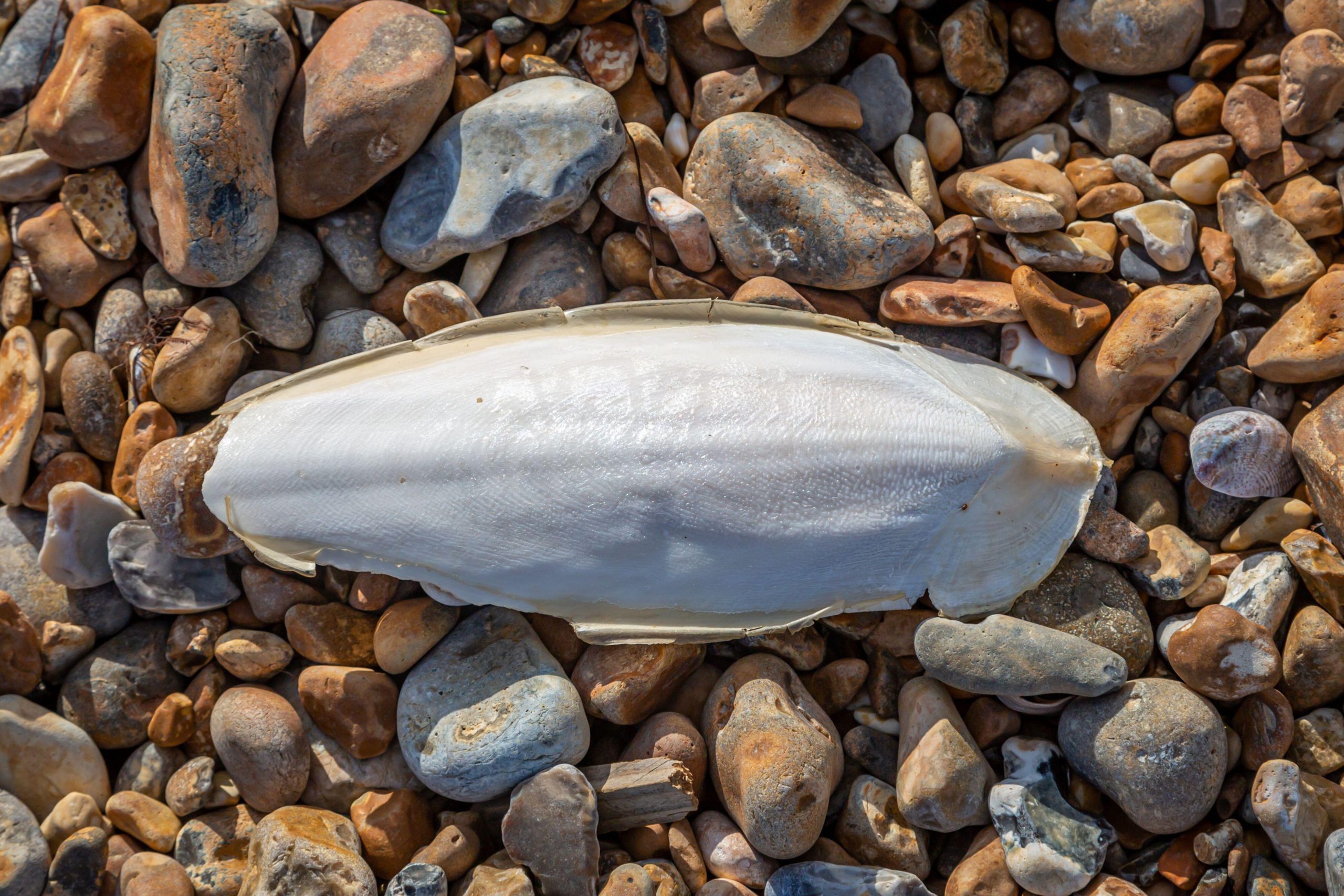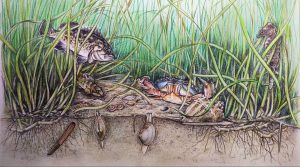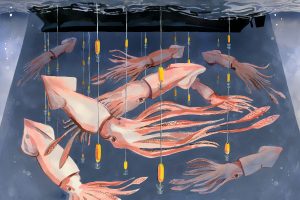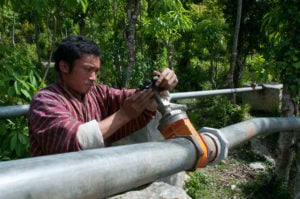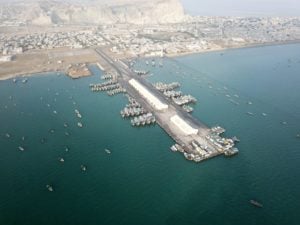In the 1980s, strong easterly winds would blow fragments of seagrass from Caofeidian in Hebei province across the bay to Hangu, Tianjin. Retired local fisher Liu Cuibo recalls the white internal shells of cuttlefish, known as cuttlebones, or locally as “sea rabbit shells”, mixed in with the seagrass. Liu used to make extra money by collecting them.
The blow-ins weren’t as fresh as the ones in Hangu. But after cleaning, the local pharmacies would pay three cents [RMB 0.03] per bone, for use in traditional Chinese medicine. Liu recalls how a storm tide could increase the harvest: “One time I collected two or three hundred jin [100 to 150 kg] in a single day.”
Nowadays, it is rare for seagrass to wash up on the shoreline, and those grubby bones haven’t been spotted for years.
Fishers across the bay in Caofeidian are also reliant on the seagrass meadows, which act as fish nurseries. They have seen plenty of changes over the last decade after a huge port development reshaped the coast and added pressure to the ecosystem. Calls for protection of the meadows make them worry: will they have to stop fishing and find other sources of income?
Port construction and seagrass meadow distribution
Liu Cuibo talks of the “small sea” – the stretch of water off the Caofeidian coast where expanses of common eelgrass, a type of seagrass, grow.
The meadows have received more attention after scientists discovered new areas of seagrass there in 2015.
They refer to the whole area as the Leting-Caofeidian (or Tangshan) seagrass meadows. Data from 2022 shows seagrass covered a total of 3,217 hectares here – making it China’s largest area of seagrass meadows.
Liu, now a member of the Hangu Fishers’ Council, has learned how the land-reclamation project of Caofeidian port in 2003 changed the “small sea” such that seagrass is no longer blown towards Hangu. The construction changed local currents and now any uprooted or broken fragments of seagrass go north-east, rather than north-west towards Hangu.
The port construction also changed the meadow itself. Xu Shaochun, an associate researcher with the Chinese Academy of Sciences’ Institute of Oceanology, said: “The Tangshan seagrass meadows moved.”
Seagrass meadows form in calm, shallow, sunny waters. Xu explained that there used to be a naturally sheltered area between the coast and sandbar which was suitable for seagrass. At one point, there were over 4,000 hectares of meadows here. But the port construction caused them to shrink significantly. This was due both to direct land reclamation and construction work clouding the seawater, hampering photosynthesis.
Seagrass meadows to the north-east of the port quickly recovered once construction finished, in 2014. But in other areas, the recovery is less obvious.
An ocean ‘nursery’ vs utilisation
Caofeidian locals often call seagrass “weeds” and try to avoid it when they go swimming in summer. But the fishers know to work near the meadows, as that is where the fish are to be found.
Seagrass meadows are an example of a “nursery habitat”, where juveniles of many different species live until they reach maturity. A study from the Yellow Sea Fishery Research Institute found the meadows are home to a diverse range of swimming and bottom-dwelling life, not just juveniles, but adults too.
As the fish grow, they move to more open waters, boosting fishery resources and biodiversity in the surrounding area. Other research has found seagrass meadows can reduce seawater acidity by up to 30%, buffering the impacts of climate change.
In the Tangshan meadows, the Qingdao Marine Conservation Society (QMCS) has found Japanese seahorse, roughskin sculpin and narrow-ridged finless porpoise. Under Chinese law, these are all Class II protected animals, just one level beneath the strictest, Class I, protection status. Of them, the Japanese seahorse and roughskin sculpin often turn up in fishing catches. Unaware of their protected status, fishers either sell them cheap or return them to the ocean alive as they are often unpopular with buyers.
A craze for seafood foraging is also causing concerns. Local fishers told QMCS researchers that on a busy summer tens of thousands of foragers can visit, with damage to the seagrass meadows resulting. The foragers don’t know to leave juveniles in place or how to properly collect seafood, and there are no regulations or rules to guide them. The destructive foraging worsens the loss of fishery resources and biodiversity. This has all added to pressure on the meadows, which were already struggling due to the port project.
Tangshan is not the only area of seagrass in China facing pressure. A 2022 survey carried out by the Institute of Oceanology identified 26,000 hectares of the habitat in Chinese waters. This suggested that over 80% has been lost since the 1980s. The global situation is also bleak. According to a report from the UN Environment Programme (UNEP), seagrass meadows have been in decline since the 1930s, with an average of 7% of the habitat lost every year.
That makes ensuring the recovery of the Tangshan meadows even more precious. Meanwhile, debate over protecting seagrass meadows and reducing human interference has been heating up.
Conservation vs livelihoods
Although China does not have a specific law or regulation protecting seagrass meadows, there are laws that can be applied: the marine environment protection law, the sea areas administration law, and the regulations on nature reserves.
Xu Xiangmin, director of the Ocean Environment and Resources Law Institute at Ocean University of China, said better governance is needed to protect the ocean environment. He suggests adding language on seagrass meadow ecosystems to the marine environment protection law, to clarify the legal status of the habitat. There should also be regulations acknowledging the role of the meadows in protecting coastlines and stabilising the seabed. The authorities can put measures in place to maintain and develop those functions and so help conserve the meadows, Xu added.
Zhou Yi, a researcher with the Institute of Oceanology, wants to see more national seagrass meadow protected areas. He has suggested there should be between six and eight in total, as opposed to the two currently in existence. Protected status would make the planning process for projects such as ports more rigorous, and so help protect the meadows.
In its seagrass report, UNEP warns that globally only 26% of recorded seagrass meadows are within marine protected areas, compared to 40% of coral reefs and 43% of mangroves.
But fishers worry that reserve status will mean an immediate fishing ban. The researchers from QMCS found fishers have some understanding of the ecological importance of the seagrass meadows but are concerned protection of them would mean an end to fishing.
However, it is possible to protect livelihoods and the meadows at the same time. Wang Songlin, president of QMCS, says fishers can help with restoring and patrolling the meadows, or work in sustainable aquaculture. He hopes artisanal fishers can play a role in “developing marine ranching and aquaculture around seagrass meadows.”
QMCS suggests that regulating types of fishing gear, where they are used, and the size of the catch could allow for fishing to continue while protecting the seagrass meadows.
The main types of gear in use at Caofeidian are traps for species such as the Asian rapa whelk or Asian paddle crab, bottom trawling nets for various fish species, and suction dredging vessels for Manila clams and other bivalves.
The bottom-trawling and suction-dredging gear can leave the seabed damaged or stripped bare. That impacts on seagrass growth and local biodiversity, making meadow restoration harder.
Traps, however, are anchored in seagrass meadows for their unsuspecting prey to wander in to. This type of fishing is less damaging and has a longer tradition of use in the area.
QMCS thinks that traps could be meadow friendly and allow local artisanal fishing to continue in a responsible manner. This would require adjustments to mesh size, the use of escape hatches for juveniles, and non-damaging anchoring methods. It would also need rules on the placement and density of traps, plus regulations and enforcement mechanisms.
QMCS has produced (unpublished) policy suggestions for conservation and management of the Leting-Caofeidian seagrass meadows and will present these to the Chinese People’s Political Consultative Conference and the appropriate ministries at some point in the future.
Xu Shaochun also studies the sustainable development of fishing communities and thinks the “blue carbon” obtained by restoring seagrass meadows could be traded on carbon markets, with the profits returned to the fishers. Alternatively, meadows could be contracted out for fishers to raise sea cucumbers or sea snails, which do not bury themselves into the sand and so are easier to harvest.
Both in China and globally, seagrass meadows are emerging from obscurity to become “blue-carbon stars”. This is evident in various ways, from the discovery of a large patch of undocumented seagrass meadow at Caofeidian in 2015, to the 2022 survey of China’s seagrass meadow resources, to the second UN World Seagrass Day on 1 March this year.
Hopefully, greater levels of attention will lead to the development and implementation of sustainable routes to both conservation and utilisation. If this happens, fishers may one day find sea rabbit shells blown across the bay again.

